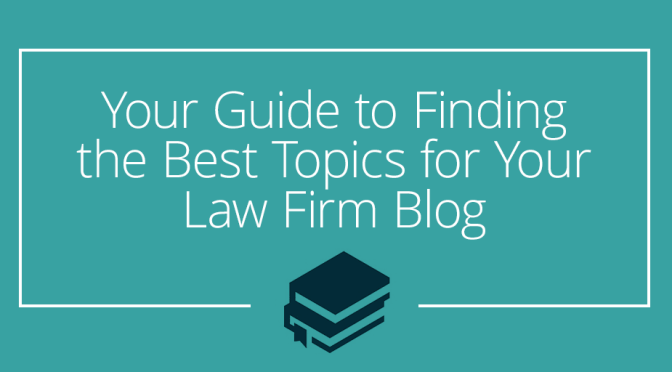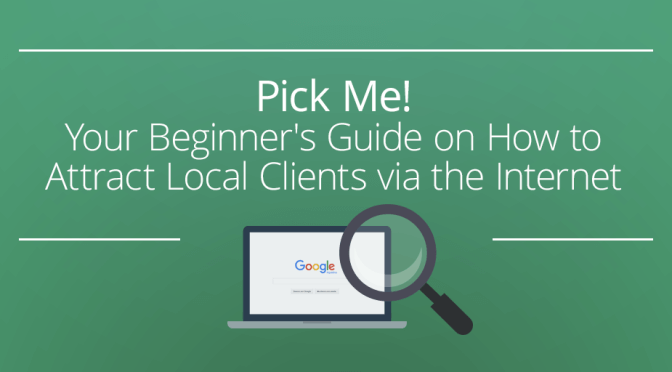Have you Googled yourself lately?
I know it sounds silly, but it’s probably the single most important task you can do this week to learn about your online reputation. Armed with the knowledge you’ll receive, you can take control of your online image and turn prospects into clients and clients into superstar referrers.
Online reputation management always starts with a quick search on Google for your name and/ or your law firm’s name. What are the first results that show up when you do a Google search?
Go on. I’ll wait.
Your search results probably look a little bit like this:
You should see your own website, followed closely by review sites like Yelp, Avvo, and Yellowpages.com. You may even find a Google listing with star ratings by your name, indicating your clients’ satisfaction levels.
Some people do vanity searches on Google for kicks and giggles, but when it comes to your online reputation, there’s nothing more persuasive than the first few results that return on a Google search. For many of your prospective clients, this will be their first encounter with your brand.
Don’t believe me?
Let’s play a scenario. Let’s say you have a satisfied client who refers you to one of their friends. Your client can’t remember your website, so he tells his friend to Google you.
While the referred prospect trusts his friend, he may get scared away from choosing you due to negative one and two star ratings on the first page of Google results. And if you don’t have any strategy in place to counteract that negative rating, you may just lose a prospective client.
Another scenario is that you’re competing with every other lawyer in your area. A lot of prospects simply search “family lawyer in town, state”. People often make their decision based on who seems to have the most amount of positive information out there. This includes positive reviews, but also an active presence on these review sites. The final part of the puzzle is your own website that operates as your hub and a library of information.
Let’s take a look at some other best practices for managing your law firm’s online reputation.
Set Yourself Up for Success
+Set up shop on Avvo
Claim Your Profile on Avvo. While Avvo populates the basics of your profile with information from your state’s Bar Association, you should also fill in the gaps. Here are a few things you should include:
Up-to-date information about your law firm, including your website, phone number, email, and physical address.
A professional headshot. People like seeing who they will be working with. Putting a face to the name humanizes your brand.
List awards you’ve won, publications that have featured you, and organizations you’re a member of. It can improve your Avvo ranking and boost your reputation in the eyes of potential clients.
Get Reviews
+Ask for Reviews*
You’re a great attorney who cares about your clients (or else you wouldn’t be here). Based on this, I know you have clients who care about you, too. Now, it’s time to get them to show it.
How are your powers of telepathy?
Okay, so if mental communication doesn’t work, it’s time to go verbal or at least written. At the end of your case or legal preparation, ask your client to share a review about you or your law firm. You can ask face to face, if your client is in your office, or via email if you prefer.
When asking face to face, I recommend having a review-optimized business card handy. On your business card, point to the key places you’d like for your client to leave a review.
Image Courtesy of Access Publishing
When asking via email, I recommend that you provide a mini-guide to make it as easy as possible for the client to leave a review for you. Ask for the review, leave a link to your profile (or directions on how to get to your profile), and provide guiding questions such as:
How was our service?
Would you recommend us to your friends and family?
Did we promptly respond to your questions and concerns?
Would you return to do business with us? If yes, why?
Keep it short, sweet, and to the point. That way, you’ll get a lot more people to leave reviews.
*You can’t actually ask for reviews for Yelp. Yelp specifically forbids it. What you can do is inform your clients that you are also on Yelp, and hopefully they’ll get the hint.
Alternatively, instead of asking for your clients to review you on third party websites, you can ask for good old fashioned testimonials. Then, you can put these testimonials on your own site.
While this may limit the amount of people who actually see your testimonials, you have a lot more control over what’s said on your own site. Review sites routinely delete reviews (both positive and negative, real and fake). This means a lot of your positive reviews may be lost forever because of a capricious algorithm.
That’s no fair.
Control the conversation by hosting all of your reviews (both good and bad) on your own website.
+Highlight Video Testimonials
If you can get your clients to leave video testimonials, do it! There are few things more persuasive and reputation boosting in the eyes of a prospective client than watching a relatable person tell his or her story.
You don’t have to hire a film crew and make a big production, unless you’re going to use this to create a commercial. If it’s strictly for your website or to market your law firm through Facebook or YouTube, you’ve got all the equipment you’ll need with your smartphone.
That’s right, a smartphone, a chair next to a window for good lighting, and (if you want better audio) a $15 lavalier microphone is all you’ll need to capture a compelling testimonial that will woo your prospects.

Keep an Eye on Reviews
While you should make a habit of checking the top review sites regularly, it may be hard to catch every mention of you and your law firm on the Internet. That’s why I recommend setting up a Google Alert to get notified every time you’re mentioned.
Simply go here to set up a Google alert. You’ll need a Google account (if you have a Gmail address, that works). Then, enter any term you’d like to be notified of. This may include your name, your law firm’s name, or even a name of your competitors.

Then, set a notification schedule. You may wish to receive a daily email digest, or an email once a week. And you’re done. It’s easy, free, and a great way to monitor your online reputation.
Respond to All Reviews (Even Negative Ones)
So, now that you’re monitoring all mentions of your name, it’s time to make a commitment. Commit to responding to each and every review left about you and/or your law firm.
[Tweet “Commit to responding to each and every review left about you and/or your law firm. Here’s why:”]A lot of attorneys don’t do this, and the result ranges from appearing out of touch to just not seeming to care at all.
The fact is, if someone cares enough to leave a review on a website about you, you should care enough to respond.
Especially to negative reviews.
You may be thinking, why should I get down and dirty with a negative review? Don’t think of it that way.
Instead, think of it as an opportunity to show how much you’re invested in resolving problems. Plus, prospective clients are watching carefully to see how (or if) you respond to negative reviews. Your response also will indicate whether or not you’re argumentative (well, of course you are– you’re a lawyer!– but you’re also an advocate, and that’s the side you should show when interacting with online comments).
Last but not least, respond promptly. Responding a year later doesn’t have the same impact as responding a month after the fact. That’s why it’s a good idea to set up Google Alerts and implement a schedule for checking your reviews.
The First Step
The first step is to set up a website and control the conversation. AmazeLaw can help with that. Let’s talk.









 Network with anybody you can get in front of. This includes fellow attorneys for sure, but also expands beyond your colleagues.
Network with anybody you can get in front of. This includes fellow attorneys for sure, but also expands beyond your colleagues.


 Google Search: How to pay for an old ticket
Google Search: How to pay for an old ticket Google Search: Do I own my music if it isn’t registered
Google Search: Do I own my music if it isn’t registered















 Screenshot of Zachar
Screenshot of Zachar  A
A  A Yelp search for “law firms in Phoenix, AZ”
A Yelp search for “law firms in Phoenix, AZ”






